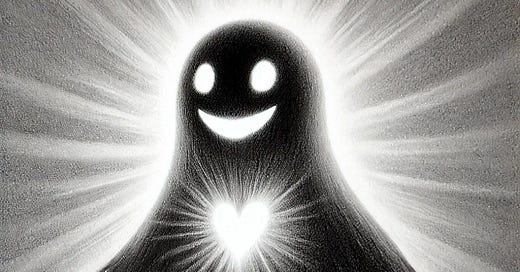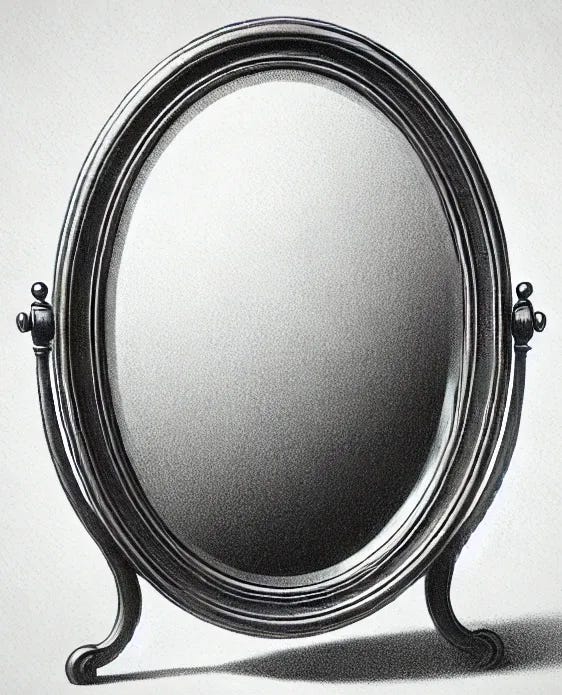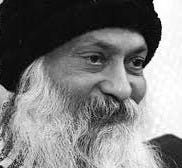The physical matter reality (PMR) we inhabit is defined by duality—light exists only in contrast to darkness, and good only lives in the presence of evil. As humans, we exist between these two poles, constantly navigating the tension between our primal instincts and our highest potential.
I am sure you have all been there: you feel like you are on the right path, calm, loving, and understanding. But then, something doesn't go your way, or someone provokes you, and suddenly you lose it! Unless you are a saint, there is a darker side within you, just waiting for the right moment to surface.
But where does this come from? Why do we carry so many negative emotions, locked away in the unconscious mind—fear, anger, hate, dark thoughts and self-doubt? Why do these feelings linger deep within us, waiting for the right moment to rise to the surface?
Renowned Swiss psychologist Carl Jung introduced the concept of the “shadow” to explain this. According to his theory, our shadow isn't a dark side to be feared—it exists to guide us on our journey toward becoming better, more whole human beings and to find our purpose in life!
Carl Jung and the concept of the shadow
Jung described the shadow as the unconscious part of the personality containing repressed traits, instincts and desires that one denies or hides. It includes aspects deemed unacceptable by the ego, often projected onto others.
Jung believed that integrating the shadow—acknowledging and reconciling these hidden elements—is crucial for self-awareness, psychological growth and finding true purpose in life. Unaddressed, it can lead to inner conflict or destructive behavior.
He viewed the shadow as both a challenge and a source of vitality, urging individuals to confront it through introspection rather than suppression. The more you try to push it away, the more control it gains over your life. The harder you resist, the more violently it resurfaces when you can no longer keep it buried.
Other people act as mirrors
The shadow also influences our relationships in ways we often don’t realize. When we suppress parts of ourselves that we dislike or feel uncomfortable with, we tend to be provoked by others who reflect those very aspects back to us.
For example, if you struggle with feelings of inadequacy, you might find yourself criticizing people who appear overly confident. If you don’t feel worthy, you might feel triggered by someone who is wealthy. This psychological dynamic is known as projection.
Once you understand this, you will start to see others as mirrors, revealing valuable insights about yourself—the world reflects your own shadow back at you. And here’s the interesting twist: your biggest enemies are your greatest teachers, deserving respect for the lessons they bring!
Your shadow provides you with a map
The parts of yourself that you suppress are often deeply connected to your greatest gifts and passions. Someone who has buried their creativity out of fear of failure may discover that embracing this neglected side leads them to their true purpose in life. In this way, the shadow serves as a map, guiding you toward self-discovery.
Your dark side may whisper to you in dreams, surface in your daily life, or be reflected back at you through others—all as a way to push you toward healing and awakening. Once you recognize it, don’t judge or resist it. Instead, accept, integrate and embrace it as part of your wholeness.
By doing so, you will unlock a vast reservoir of energy that was once spent suppressing your shadow. Now, that energy can be used to create a more fulfilling life and connect with your true passion!
Will the shadow ever disappear entirely?
Indian spiritual teacher and mystic Osho, known for his unconventional and often controversial views on religion, meditation, love and personal freedom, spoke about shadow work in an even more fundamental way: “There is only one way and that is I can disappear so that the shadow disappears, hence so much emphasis on the effacement of the ego…when I disappear my shadow also disappears, and I merge and become one with Brahma – not as an ‘I’ but as a void…”
While Osho describes the process of fully dissolving the shadow, this may seem almost impossible to achieve from where you are today. It can be glimpsed in moments of deep meditation, when the mind becomes completely still, but sustaining this state continuously is a significant challenge. Therefore, I will outline a practical and concrete step-by-step plan in the next chapter.
My approach to “shadow work”
The following framework is inspired by Jungian theory, the teachings of Eastern philosophers like Osho and my own personal experiences. While it has been effective for me, you may prefer a different approach—after all, we are all unique individuals with the freedom to find our own path.
Self-Awareness and Honesty: Pay close attention to your reactions to certain people and situations. Ask yourself: Why do I feel this way? What are these emotions trying to reveal about me? Approach this with honesty and curiosity, as your reactions often hold clues to your hidden fears, desires and unresolved aspects of yourself.
Acceptance: Refrain from judging yourself or others. Instead, observe what arises within you with openness and compassion. Acknowledge your emotions, thoughts and patterns without resistance. When you fully accept what you see, the shadow is brought into the light—no longer hidden, but integrated into your awareness.
Understanding: Take time to reflect, contemplate and meditate on the patterns you have uncovered and their origins. Often, these patterns stem from childhood experiences or past traumas that shaped your beliefs and behaviors. Ask yourself: Which parts of my personality have I suppressed out of fear, rejection, or societal conditioning? Gaining clarity on these hidden aspects allows you to reclaim your true self with awareness and compassion.
Therapy: While the goal is to free yourself, you certainly cannot and should not act on every dark impulse! Sometimes help is required and I can encourage everyone to seek support from a traditional psychiatrist or a systemic coach if you feel unable to make progress on your own.
Integration: Over time through self-awareness, acceptance, meditation, understanding and—if needed—therapy, your dark side will be integrated and you begin to become whole.
What I have described above is not an easy path, but it is a rewarding and often times fun journey of self-discovery. As you embrace your whole self, you will gain clarity, cultivate more love for yourself and others and unlock the energy to create the life you have always dreamed of!
Want to engage?
Please subscribe and join my community, if you would like to engage in deeper discussions about this or any topic related to healing and awakening. My paid subscribers have access to personal coaching via Chat, and Gold Members get one hour of personal coaching via Teams/Zoom per year on top.
I also offer personalized coaching sessions on spiritual topics and powerful techniques that have helped me and many others before—let them be a resource for you as well on your path of healing and awakening. Just reach out!
The Path of Healing and Awakening is a reader-supported publication. To receive new posts and support my work, consider becoming a free or paid subscriber.









